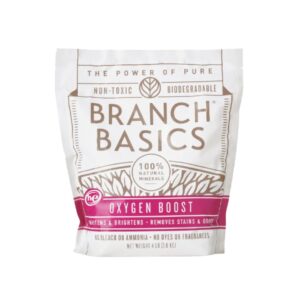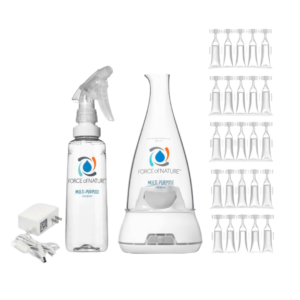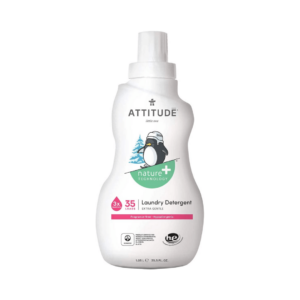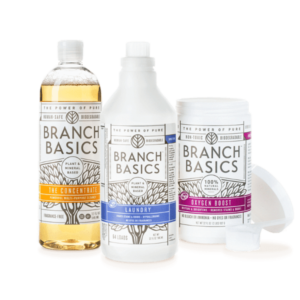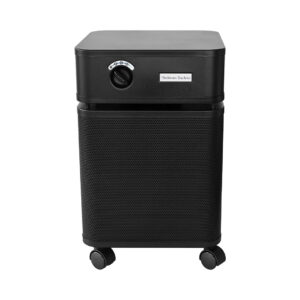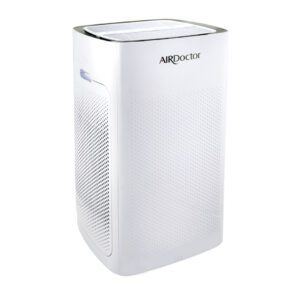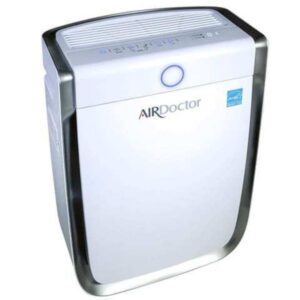Ah, dry cleaning. It’s the necessary evil that keeps our fancy clothes looking fresh and clean – right? Dry cleaners tout big “organic” signs in their windows to show that they’re healthier and don’t use nasty chemicals… but is it really all it’s cracked up to be? Is organic dry cleaning actually non-toxic? Not all dry cleaners are created equal – let’s dive into the details.
Keep reading to learn more about organic dry cleaning.
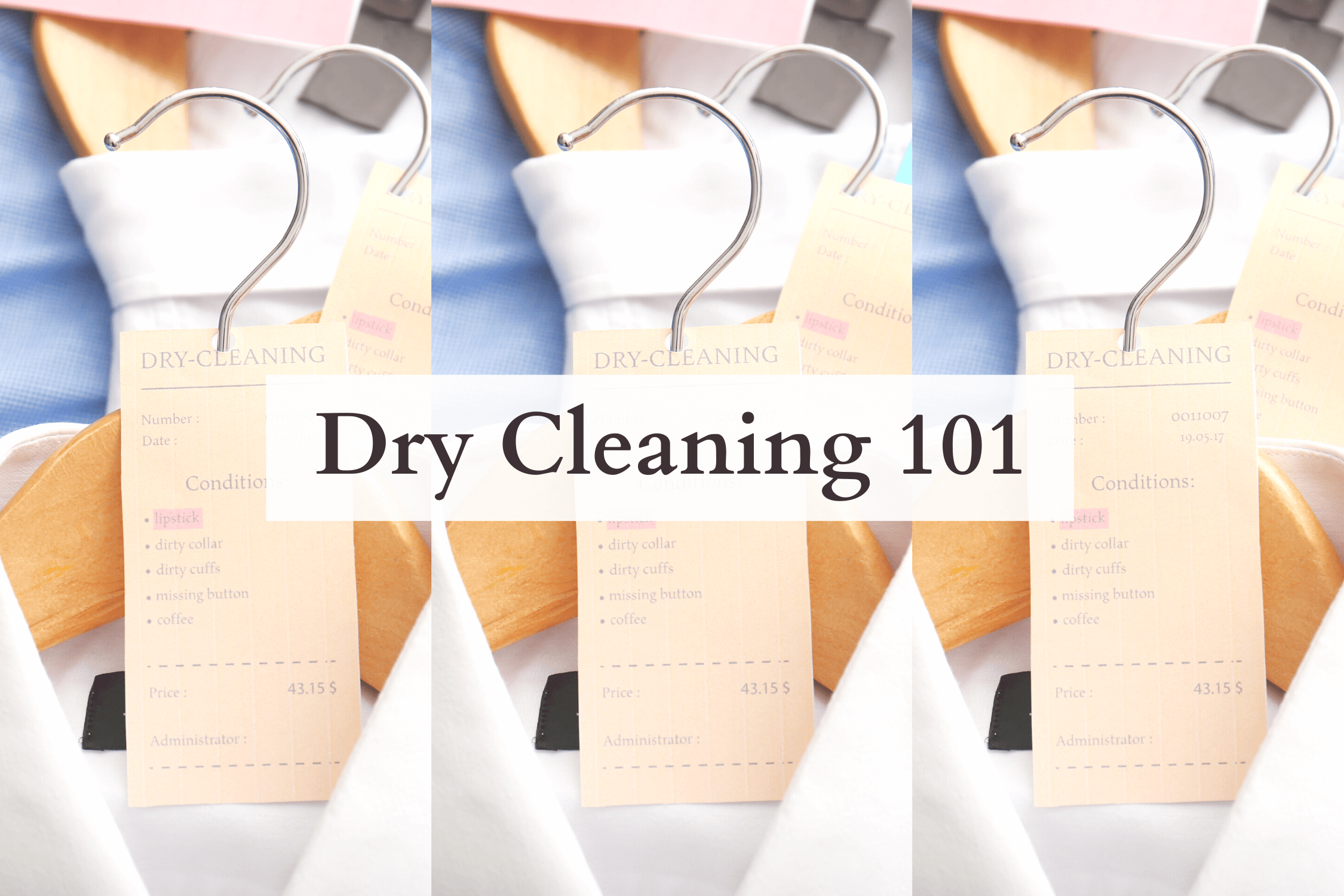
Note: This article contains affiliate links, meaning In On Around will make a small commission at no additional cost to you. This helps me maintain the site. As always, I value full transparency & only work with brands I love and trust.
What Is Dry Cleaning?
Dry cleaning is the process of cleaning clothes without the use of water. It’s somewhat of a misnomer since liquids are still used in the dry cleaning process. Fabrics like leather, wool, and silk are commonly dry-cleaned to avoid shrinkage. Most local dry cleaning businesses do not have equipment on-site, rather they will send clothing to a central cleaning facility.
What Is Organic Dry Cleaning?
When we think of the word “organic,” we often associate it with food that’s grown without pesticides or harmful chemicals. But here’s the thing – organic dry cleaning isn’t always what it’s cracked up to be. While it’s true that organic dry cleaning uses solvents that are potentially less harmful to the environment than traditional dry cleaning, they’re not exactly non-toxic.
The solvents used in organic dry cleaning can still cause health problems, especially if you’re exposed to them for long periods of time. Plus, just because something is labeled as “organic” doesn’t necessarily mean it’s good for you. It’s important to remember that organic dry cleaning isn’t the same thing as organic food.
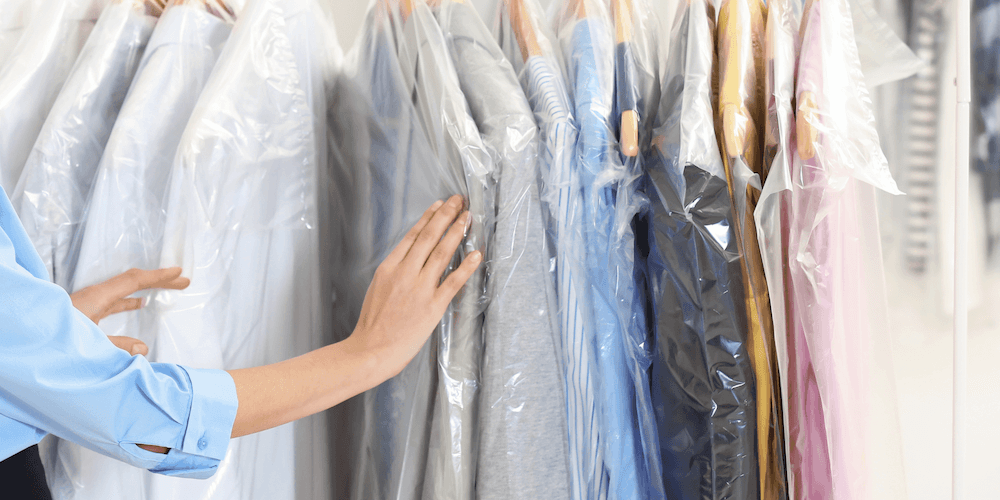
Is Organic Dry Cleaning Regulated?
The term “organic” in dry cleaning is NOT regulated. Neither is “eco-friendly,” “green,” or “non-toxic.” Just because something is labeled to seem healthy doesn’t necessarily mean it’s actually healthy.
Typically, dry cleaning companies refer to themselves as organic if they use compounds/chemicals that contain carbon, meaning MOST dry cleaners (including those using perc) can claim to be “organic.” Unfortunately, organic dry cleaning is largely a farse, so it’s best to ignore the organic sign and look into the specific cleaning methods used.
Don’t be fooled by “eco-friendly” marketing. Understand what processes they use.
Chemicals Used In Dry Cleaning
Before you pull out your wallet and head to the nearest dry cleaner, it’s important to know your options when it comes to dry cleaning. Let’s dive into the different chemicals commonly used.
1 – Tetrachloroethylene/Perchlorethylene (“PERC”)
- This is the most common solvent that’s used in dry cleaning in the United States
- It’s known as a probable human carcinogen (Group 2A) and it induced leukemia in rats
- Exposure usually occurs through respiration or skin absorption
- This chemical is an air and waterway pollutant – it easily evaporates into the air. Perc residue remains on clothing after cleaning and it can vaporize into the air while hanging in your closet
- California banned new perc dry-cleaning machines in 2007 and all perc must be taken out of service by January 2023. Other states may follow.
- Potentially linked to: [1, 2, 3, 4]
- Cervical cancer
- Esophageal Cancer
- Vision issues
- Non-Hodgkin’s Lymphoma
- Parkinson’s Disease
- Liver and kidney damage
- Central nervous system disruption, like dizziness and loss of coordination
- Reproductive issues and birth defects… and more.
- It’s also commonly referred to as:
- Dowper (the brand name)
- Ethylene tetrachloride
- PCE
- Per or PER
- Perchlorethylene
- Perchloroethene
- Perchloroethylene
- Tetrachlorethylene
- 1,1,2,2-Tetrachloroethene
- 1,1,2,2-Tetrachloroethylene
Luckily, many dry cleaners are moving away from the use of Perc since it’s bad for you and the environment, BUT it’s still the most popular method.
According to Eco Clean Austin, “a 2001 Greenpeace report found that 70% of all perc used for cleaning ends up in the environment. Studies have found perc in more than 50% of all Superfund sites, and a federal survey found perc in more than 26% of U.S. groundwater supplies, in concentrations reaching hundreds of times the acceptable limit established by the Safe Drinking Water Act.” [5] Big yikes.
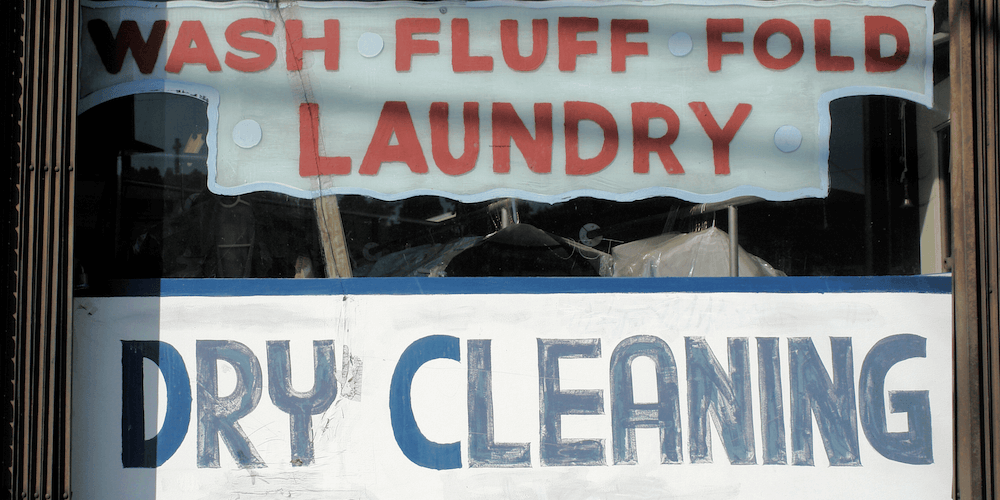
Does Perc Wash Out Of Clothing?
Perc does not immediately wash out of clothing. Nearly ten years ago, a high school science student collaborated with university researchers on a study that showed perc accumulating in cotton and polyester fabrics, even after two to three washes. The study also revealed that in wool fabrics, perc can still accumulate even after six washes. [6]
Perc is the most toxic dry cleaning chemical that’s also the most common.
2 – DF-2000
- This is a petroleum-based solvent that’s commonly used as a perc alternative
- Made by Exxon-Mobil’s Chemical Company [7]
- It’s certainly not “non-toxic” in any way, but it may be potentially safer than Perc
- The Environmental Protection Agency (EPA) classifies this as a neurotoxin
3 – GreenEarth (D-5 Silicone)
- The full name of this compound is decamethylcyclopentasiloxane, which is a silicone-based solvent
- This is another eco-friendly alternative to traditional dry cleaning solvents. It’s made from a silicone-based solvent that’s non-toxic and biodegradable.
- May be carcinogenic in large doses, especially related to uterine cancer, shown in animal studies [8]
- There aren’t a lot of studies on the long-term effects, so its safety profile is unknown, but it claims to be “safer” than perc
Check Out The In On Around Shop
4 – Other Hydrocarbons
- These solvents are less toxic than perc, but they can still cause health problems if you’re exposed to them for long periods of time.
- Hydrocarbons are highly flammable and can put dry cleaner workers at risk.
- These are petroleum-based solvents and only slightly less toxic than perc. About 20% of dry cleaners use synthetic petroleum, which can release volatile organic compounds (VOCs) into the air. [9]
- Aside from DF-2000, other common hydrocarbons include PureDry, EcoSolv, Shell Sol 140 HT, and more. [10]
5 – Glycol Ethers
- These solvents are considered “safer” than perc, but they’re linked to reproductive and developmental damage in humans [11]
- Dipropylene glycol tertiary butyl ether (DPTB) is a commonly used glycol ether [12]
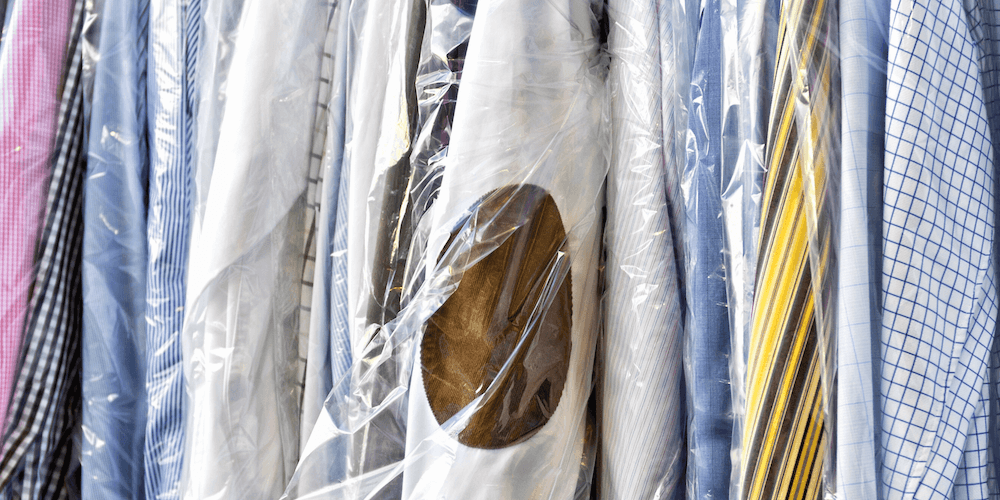
6 – Liquid Carbon Dioxide (CO2)
- This is a newer, more eco-friendly alternative to traditional dry cleaning solvents. It’s non-toxic and doesn’t produce any harmful fumes.
- The equipment for this process is very expensive (more so than perc), so it’s not as commonly found.
- The CO2 that’s used is captured as a by-product of industrial processes, so it doesn’t contribute to global warming in any additional way.
- Clothes are added to a pressurized chamber and injected with gaseous CO2, which helps dissolve fats, oils, and dirt
- FYI: Some CO2 cleaners are manufacturer by Solvair, which uses Dipropylene Glycol n-Butyl Ether (or DPnB) as a chemical in their cleaning fluid. This isn’t a cause for concern, however, since it’s not linked to hormone disruption. Propylene glycol ethers are not the same as ethylene glycol ethers. [13]
The organic definition for food is NOT the same as the organic definition for dry cleaning.
7 – Wet Cleaning
- This is a water-based cleaning method that doesn’t use any chemical solvents. It’s considered the most environmentally friendly option for cleaning clothes.
- This method can also help preserve the fabric color.
- When done properly, wet cleaning shouldn’t shrink clothing.
What’s The Best Dry Cleaning Alternative?
If you’re looking to reduce your exposure to unnecessary dry-cleaning chemicals, follow these steps.
1 – Choose Healthier Methods
The healthiest, least-toxic dry cleaning options are the liquid CO2 method and wet cleaning (depending on the types of detergent used).
If you absolutely must dry clean your clothing, it’s best to let your clothes off-gas outside or near an air purifier upon bringing them back home. Avoid any perc-based dry cleaners.
2 – Try Washing It At Home
If your clothing doesn’t require dry cleaning, just wash it at home with non-toxic laundry detergent. You can oftentimes wash “dry-clean only” clothing on a cold, delicate washing machine cycle (like in a mesh bag) or gently by hand. Make sure to either line dry or lay flat to dry, depending on the fabric type.
Usually, washing delicate knits (like cashmere) can shrink when added to a washing machine due to the agitation. You can oftentimes hand wash delicate knits in a clean tub or bowl with gentle soap.
Silk fabrics may lose color if washed at home, so it’s best to spot test the fabric first before washing the whole thing. Always read the special care instructions on your clothing and use caution.
Don’t fall for “organic” greenwashing in the dry cleaning industry.
3 – Use A Steamer
You can also use a hand-held steamer to help kill odor-causing bacteria. If you want to get really fancy, you can invest in an LG Styler Clothes Steamer.
4 – Spray With Force Of Nature
If you’re looking to reduce some odors and extend the life of clothing without washing, you can spray it with Force of Nature (which is a natural disinfectant). Always spot-test first to ensure it won’t impact fabric color.
To learn more about non-toxic cleaning recommendations, check out: 11 Natural Cleaning Products & Printable Spring Cleaning Checklist
5 – Focus On Air Quality
If you regularly get your clothing dry cleaned, it may be impacting your indoor air quality. Invest in high-quality air purifiers to keep near your closet.
If you live in an apartment above a dry cleaner, be very cautious about your indoor air quality – it’s best to avoid living in these areas, especially if they use perc and dry-clean on-site.
How To Find Local Non-Toxic Dry Cleaners
You can search for local wet cleaners by searching “wet cleaners near me” on Google. It’s always best to ask business owners a ton of questions about how they clean their clothing or where they outsource it. Ask them which specific method and chemicals they’re using.
Final Thoughts – Non-Toxic Organic Dry Cleaning
Many “dry clean only” garments can actually be washed with water and detergent. Of course, use caution – it very much depends on the specific item (if you ruin your clothing, don’t shoot the messenger!). It’s always best to spot-test any at-home cleaning methods first. If you’re looking for a better alternative to traditional dry cleaning (which uses perc), opt for using the liquid CO2 method or wet cleaning.
⬇ Pin this “Is Non-Toxic Dry Cleaning Legit?” pic on Pinterest for future reference! ⬇
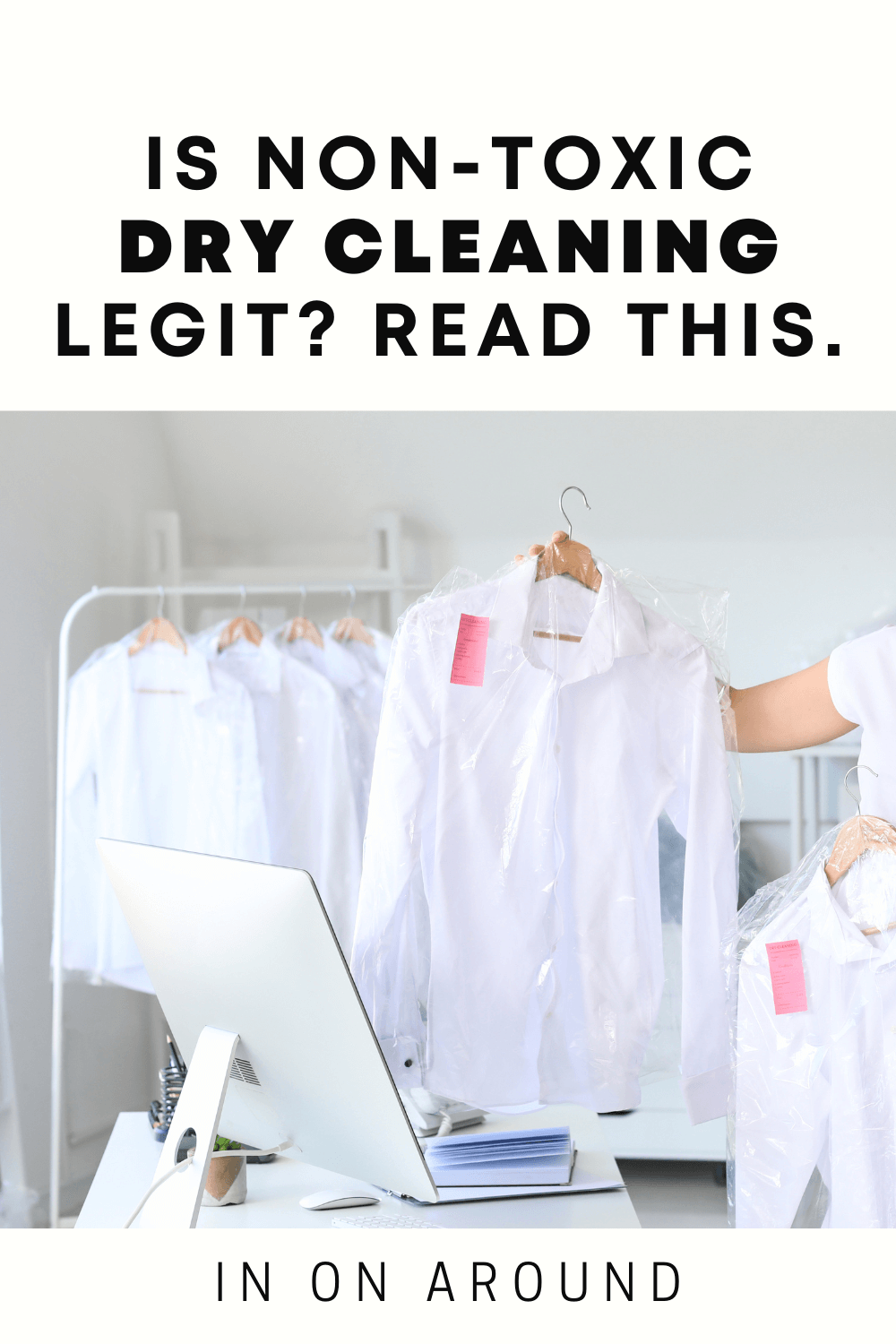
Frequently Asked Questions – Organic Dry Cleaning 101
Click on the below FAQs to learn more about eco-friendly dry cleaning, chemical-free dry cleaning, green dry cleaning, natural dry cleaning, as well as sustainable, hypoallergenic, plant-based, biodegradable, and gentle cleaning methods.
Is Dry Cleaning With Perc Healthy?
Are Organic Dry Cleaners Healthy?
Can Dry Clean Only Clothing Be Washed At Home?
What Are Safer Dry Cleaning Options?
How often do you dry clean clothing?
Let me know your thoughts and key takeaways in the comments below!
You can watch our web story here.
xoxo,

Want to read more? Check out my other articles here!
Other references on Organic Dry Cleaning: OSHA, Gimme The Good Stuff, NPR, NIH, CDC, EPA, Sierra Club, The Spruce, How Stuff Works, Sierra Club, Textile Learner, Greener Cleaner, CA.gov, NYC Health, EcoClean, EnviroForensics, 1 Stop Wash, Press Cleaners, Urbanette, Rave Fabricare, The Filtery, The Spruce, Big Green Purse, VICE, Martha Stewart, Washington Post, Marketplace, Turi, Reviewed, Wellness Mama, Mulberry’s
Copyright In On Around LLC 2023 ©. The statements made on this website have not been evaluated by the FDA (U.S. Food & Drug Administration). They are not intended to diagnose, treat, cure, or prevent any disease. The information provided by this website should not be used as individual medical advice and you should always consult your doctor for individual recommendations and treatment. The information contained in this site is provided on an “as is” basis. Related to this site, there are no guarantees of completeness, accuracy, usefulness, or timeliness. In On Around LLC assumes no responsibility or liability for any errors or omissions in the content of this site.

